Great Atlantic and Pacific Tea Company Warehouse
Introduction
Text-to-speech Audio
Images
North & west facades of Great Atlantic & Pacific Tea Company warehouse in 1977 (George R. Adams)
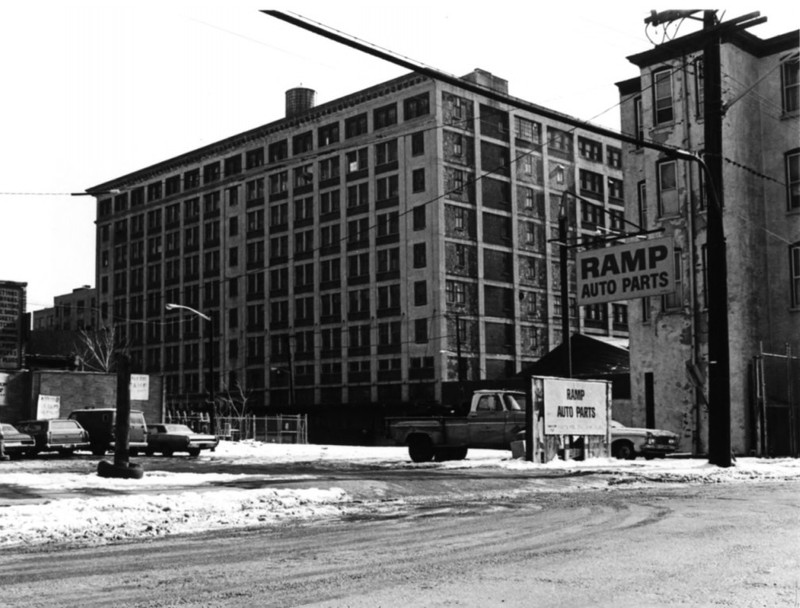
Back cover of ca. 1885 children's christmas story promotional booklet by the Great A&P Tea Co.
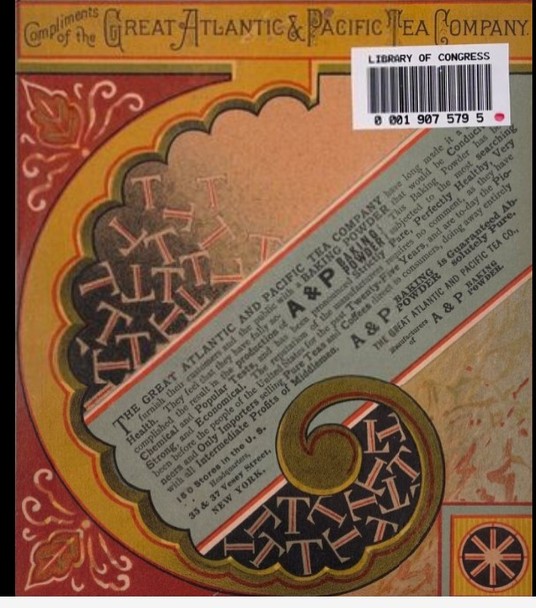
List of all 150 U.S. stores in the Great A&P Tea Co. in ca. 1885 company promotional booklet (Great A&P Tea Co.)

Company description in the Great A&P Tea Co.'s ca. 1885 promotional booklet
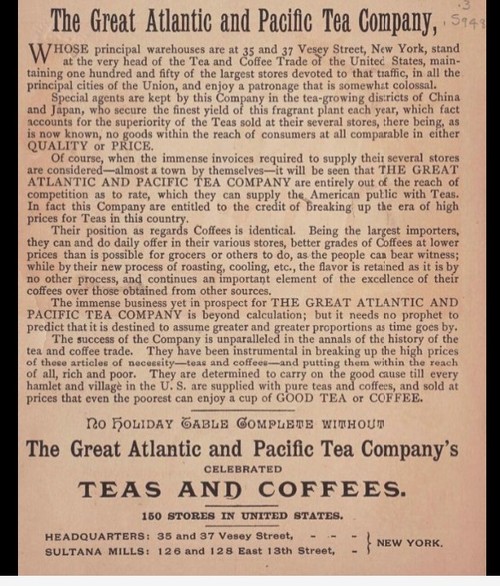
South facades of former A&P warehouse (left) & former auxiliary warehouse (right) in 1977 photo (Adams)
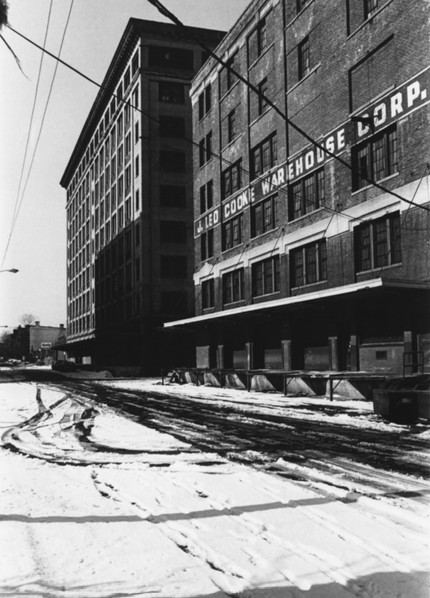
Train loading docks on east side of former A&P warehouse in 1977 photo (Adams)
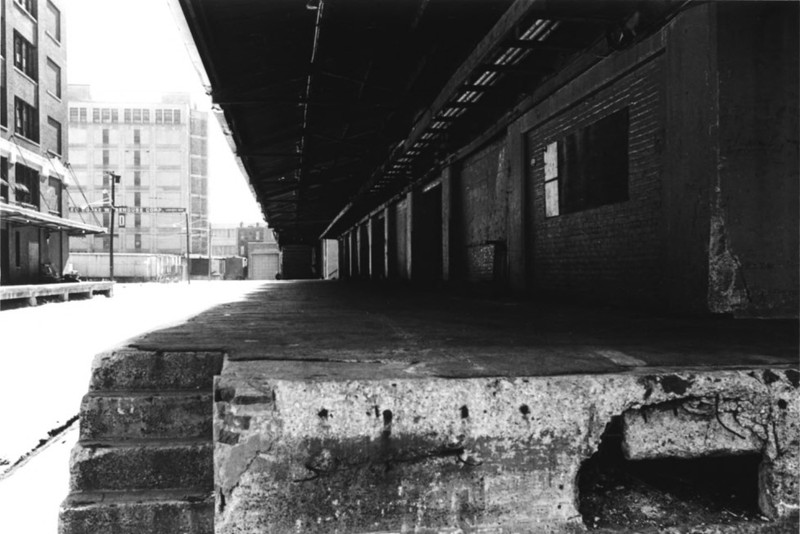
Backstory and Context
Text-to-speech Audio
George Francis Gilman opened a leather importing business in New York City in the late 1850s and eventually formed a partnership with one of his employees, George Hunting Hartford. By 1859, the pair were buying tea directly from clipper ships and retailing it, along with their leather products. By eliminating wholesalers and buying directly from the suppliers, the men could reduce the price of this expensive commodity by half. The success of the tea business caused the men to drop the leather side of the business by 1862. The Great American Tea Company opened a new store in 1864 on Vesey Street in NYC. The firm also offered mail order, and advertised using circulars. By the mid-1880s, the company had opened 150 branch stores across the U.S., offering a variety of food products. A&P was still the largest chain of grocery store in the United States in the 1970s.
Great Atlantic and Pacific once had a complex of five buildings in this Jersey City location, including a bakery and warehouses. The warehouse at 150 Bay Street (the subject of this entry), designed by Howard Chapman and built by Turner Construction Company, was considered the main structure in the complex. Only three of the five buildings were left standing by the 1970s. One was the auxiliary warehouse and bakery built in 1915 near this warehouse, at 124-134 Bay Street; that building later became the offices of a set production company, Acadia Scenic. The complex served as a manufacturing and distribution point for the company's stores in the NYC metropolitan region, from northern New Jersey through the boroughs of NYC and Long Island. Great Atlantic and Pacific put the warehouse building at 150 Bay Street, and its other four buildings here, up for sale in 1928 and 1929, as part of an effort to decentralize operations into smaller units in different locations.
The building at 150 Bay Street was still being used as a warehouse in 1977 when it was documented for listing in the National Register. The owner at that time was Kaycel Realty; access to the interior was not provided, but 1920s records show that the building held eight freight and two passenger elevators. A sprinkler system and cold storage areas were part of the design. A massive, detailed cornice crowns the 360,000-square-foot reinforced concrete building with brick fill. The ground level held double sliding doors on all but the west side, leading to a three-foot tall loading dock covered by a shed roof; train tracks were laid up to the east side of the building. Triangular projections from the east loading dock allowed for easier unloading of trucks. The ninth story held dining rooms and kitchens for employees, with the company's signature coffee roasting machines.
This neighborhood is now the Powerhouse Arts District (PAD), where many nineteenth-century industrial buildings were converted near the turn of the twentieth century into living and work spaces popular with artists. The PAD covers about 11 blocks between, roughly, Second Street, Washington Street, Steuben Street, and Marin Boulevard. The renovated building is now owned and managed by Bay Street Associates, LLC, and contains residential and artist work lofts, commercial spaces, and retail.
Sources
Adams, George R.. NRHP Nomination of Great Atlantic and Pacific Tea Company Warehouse, Jersey City. National Register. Washington, DC. National Park Service, 1977.
Bienvenue, Lauren. Let's Explore: The Powerhouse Arts District, Lynn Hazan, Neighborhoods. February 21st 2016. Accessed February 15th 2021. https://www.chicpeajc.com/jersey-city/neighborhoods/lets-explore-powerhouse-arts-district/.
Great Atlantic & Pacific Tea Co.. Suited to a T: a Christmas Story for the Little Ones at Home. New York, NY. The Great Atlantic and Pacific Tea Company, ca. 1885.
New Jersey City University. Great Atlantic & Pacific Company, Jersey City Past and Present. July 4th 2020. Accessed February 25th 2021. https://njcu.libguides.com/atlanticpacific.
https://npgallery.nps.gov/AssetDetail/NRIS/78001766
https://www.loc.gov/item/ca17001865/
https://www.loc.gov/item/ca17001865/
https://www.loc.gov/item/ca17001865/
https://npgallery.nps.gov/AssetDetail/NRIS/78001766
https://npgallery.nps.gov/AssetDetail/NRIS/78001766
